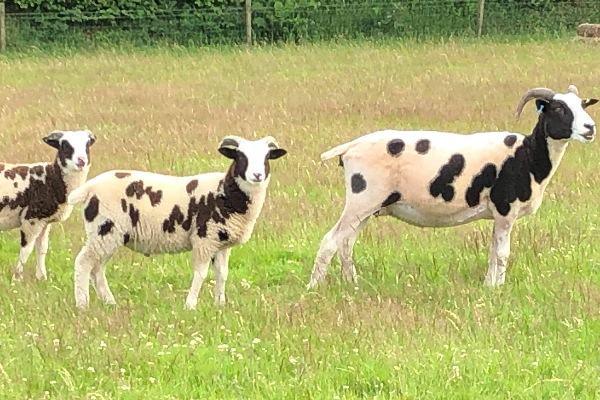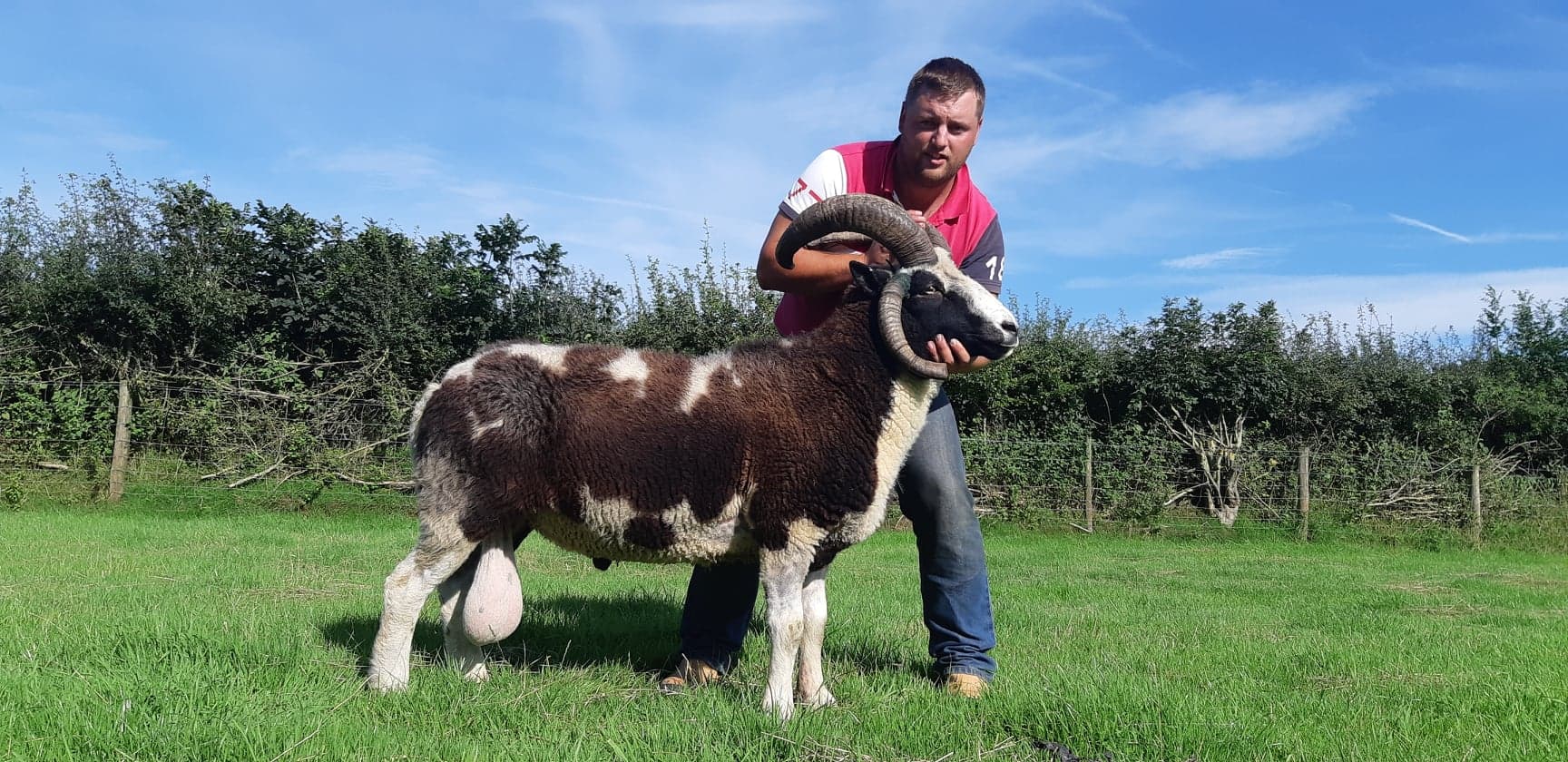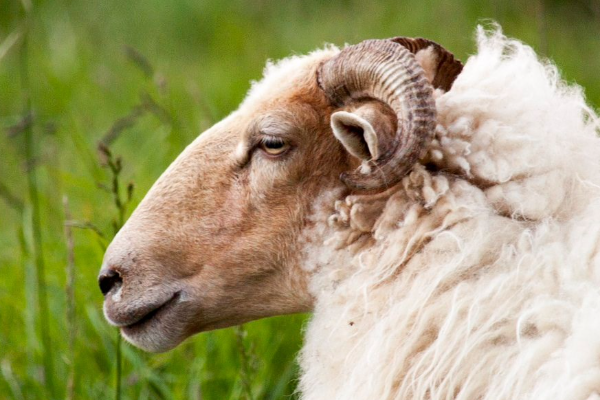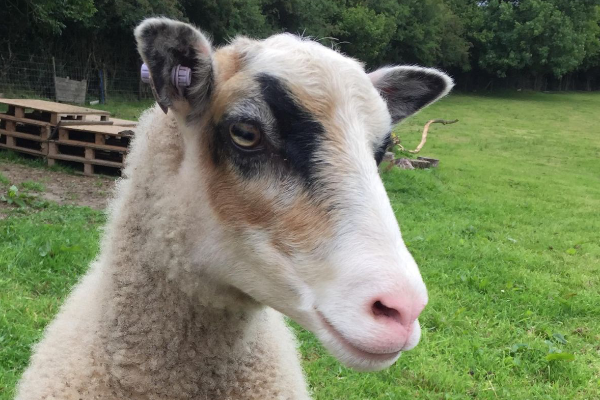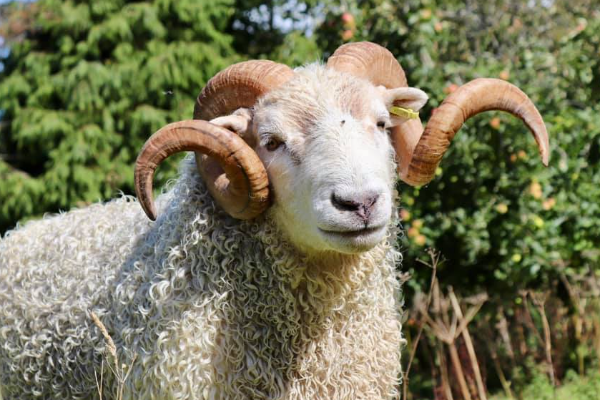Jacob Sheep
![]() What is the history of Jacob Sheep?
What is the history of Jacob Sheep?
The origin of the breed is not known. Pictorial evidence traces movement of these sheep through North Africa, Sicily, Spain and on to England.
Among the many accounts of ancient breeds of piebald sheep is the story of Jacob from the first book of the Hebrew Bible, called by Christians the Old Testament. According to the Book of Genesis (Genesis 30:31–43), Jacob took every speckled and spotted sheep from his father-in-law's (Laban's) flock and bred them. Jacob, with his wives and spotted sheep, returned to Canaan and when Jacob's son, Joseph, became a governor of Egypt, Jacob went to Egypt with his flock of spotted sheep. From Egypt, the migration of the breed across North Africa to Spain seems probable. While the translation of Genesis reads "spotted sheep", the word could easily be translated as "spotted goats."
Due to the resemblance to the animal described in Genesis, the Jacob sheep was named for the Biblical figure of Jacob sometime in the 20th century.
What are the characteristics of Jacob Sheep?
- A Jacob sheep is a primitive, domestic, multi-horned, black or lilac (deep gray or blue/purple cast) sheep with white spots.
- Both males and females are horned, generally one or two pairs, with some rams and ewes having up to six horns.
- The ram has larger and more striking horns.
- The two-horned ram has the classic horizontal double curled horn; the four-horned ram has two vertical center horns, which may be up to two feet or more in length, and two smaller side horns, which grow down along the sides of the ram's head.



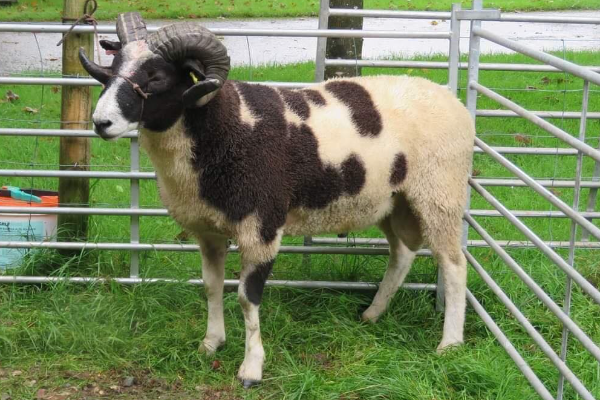
- The horns on the ewe are smaller in diameter, shorter in length and appear more delicate than those of the ram.
- Both rams and ewes exhibit the black markings, some of which are breed specific and some are random.
- Breed specific markings occur as black patches on the muzzle, around the eyes, nape of the neck, ears, pasterns, knees and hocks.
- The desired Jacob face is often referred to as "Badger-faced" with black cheeks and muzzle with a white blaze down the front of the face.
- The skin around the eyes and nose should be black.
- Random spots occur on the rest of the body and legs.
- The color pattern is approximately 50% black to white, though a great variation in the amount of black occurs.
- Each Jacob has distinctive markings which enables the shepherd to identify specific sheep at a distance.
- In addition to breed specific markings, there may be evidence of markings that are common in particular lines: large muzzle markings, lack of leg markings, lack of muzzle marking, etc.
- The Jacob fleece is open, soft and light with little grease (lanolin).
- The black wool grows out of black skin and the white wool grows out of white or pink skin, though mottling of the skin and freckling of the wool is common.
- Black wool may sun-bleach to a spectrum of browns.
- The white and black wool may be blended before spinning to form various shades of gray and brown.
- The colors may also be separated after shearing to produce various shades of yarn from a single fleece.
- The fleece generally weighs 3-6 pounds and varies in crimp and fineness.
- Staple length is generally 3-5 inches and may be up to 7 inches.
- The wool is considered to be a medium grade (Bradford count 46-54). Such breeds have been left to mate amongst themselves, often for centuries, and therefore retain much of their original wildness and physical characteristics.
- Jacob ewes generally cycle in the cooler months of the fall and have one or two lambs (triplets are not rare) in the spring.
- Jacob ewes will begin to cycle during the first fall following their birth and most often the ewe's first lamb is a single.

- The Jacob ewe is an excellent protective mother. Because of her primitive anatomy with a low tail dock, she is a very easy-lambing ewe.
- The lambs will exhibit their spotting and horn characteristics at birth, with the horn buds more readily apparent on ram lambs.
- Jacob lambs may be weaned at two months of age, but many shepherds to not separate lambs and allow the ewe to wean the lamb at about 4 months of age. They require shelter from extreme temperatures, but the shelter can be open and simple. They tend to thrive in extremes of heat and cold and have good or excellent foraging capabilities. They can secure adequate nutrition with minimal to no supplementation, even in the presence of suboptimal soil conditions.
- Jacobs are typically hardy, low-maintenance animals with a naturally high resistance to parasites and hoof problems.
- Several rare or unusual diseases have been identified in Jacob sheep. The condition known as split eyelid is a congenital defect common to several polycerate British breeds, and is genetically linked to the multi-horned trait. In mild cases, the eyelid shows a "peak" but does not impair vision or cause discomfort. In 2008, researchers in Texas identified the hexosaminidase A deficiency known in humans as Tay–Sachs disease in four Jacob lambs.
- Subsequent testing found some fifty carriers of the genetic defect among Jacobs in the United States.
- The discovery offers hope of a possible pathway to effective treatment in humans.
What is the weight of mature Jacob Sheep?
Pictures: Emma Louise Phillips - https://www.facebook.com/BMEjacobs/
Find a BreederMore

Written by
H Cetin KATIRCI
Online ShepherdBreedsMore
IllnessesMore
Forage cropsMore
![]() Патологическая физиология голодания Arina TARAN
Патологическая физиология голодания Arina TARAN![]() Дефицит фосфора (гипофосфатемия) Hipofosfatemi Arina TARAN
Дефицит фосфора (гипофосфатемия) Hipofosfatemi Arina TARAN![]() Какие бывают кормораздатчики для ферм КРС? Irina Makarova
Какие бывают кормораздатчики для ферм КРС? Irina Makarova![]() Кормушки для овец Diana Myakisheva
Кормушки для овец Diana Myakisheva![]() Питание домашних коз: что едят, виды корма и правила кормления Alina Arslantürk
Питание домашних коз: что едят, виды корма и правила кормления Alina Arslantürk![]() Важность минералов питании сельскохозяйственных животных Irina Makarova
Важность минералов питании сельскохозяйственных животных Irina Makarova

 What is the history of Jacob Sheep?
What is the history of Jacob Sheep?